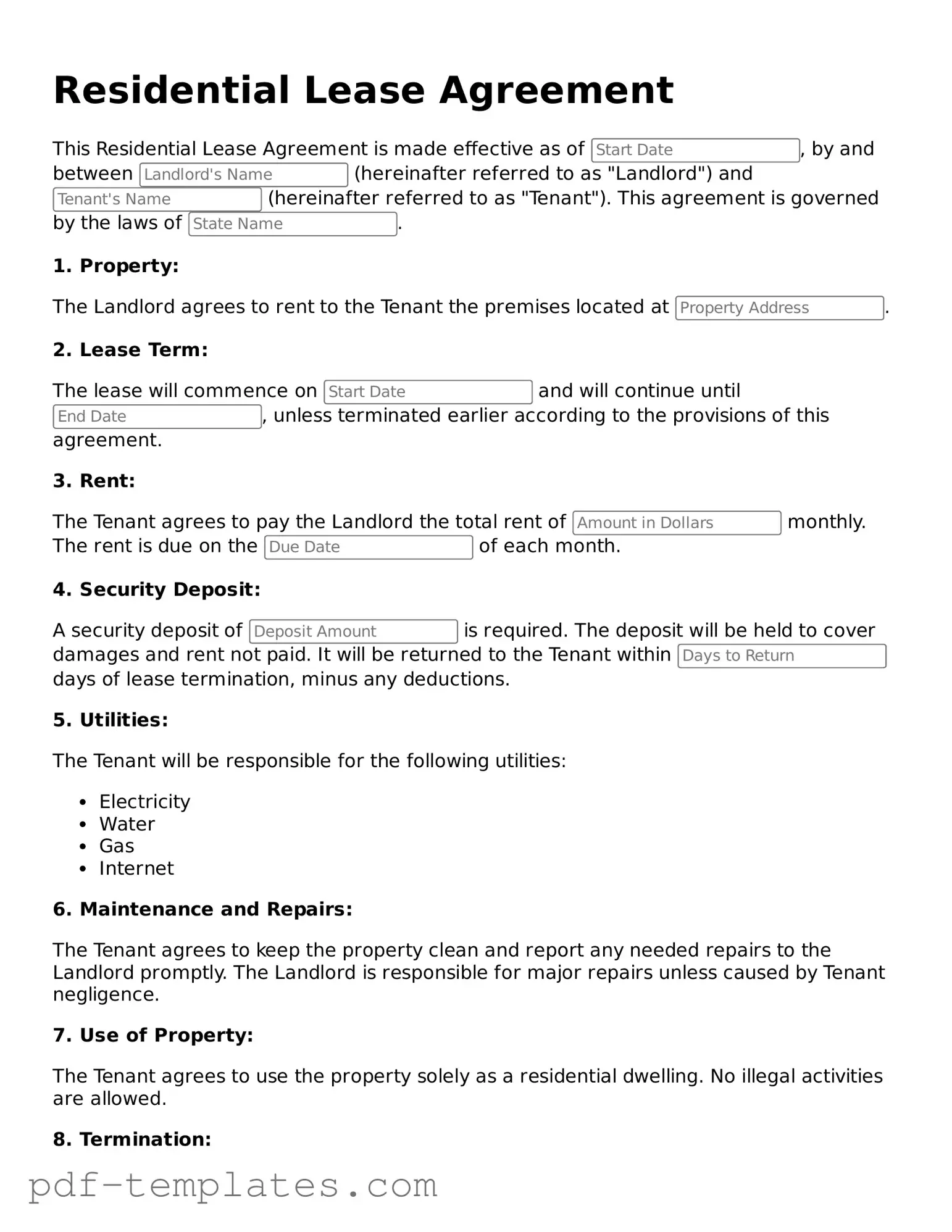A Rental Agreement is similar to a Lease Agreement in that both documents outline the terms under which a property is rented. They specify the rental amount, duration of the rental period, and responsibilities of both the landlord and tenant. However, a Rental Agreement is typically more flexible and may be used for shorter-term rentals, while a Lease Agreement often covers a longer duration, such as one year. Both documents serve to protect the rights of both parties and establish clear expectations.
A Sublease Agreement allows a tenant to rent out their leased property to another individual. Like a Lease Agreement, it includes terms such as rent, duration, and responsibilities. However, the original tenant remains responsible to the landlord for the lease terms. This document ensures that all parties understand their rights and obligations while facilitating the transfer of occupancy.
A Commercial Lease Agreement is specifically designed for renting commercial properties. Similar to a residential Lease Agreement, it outlines terms such as rent, duration, and maintenance responsibilities. However, it often includes additional clauses related to business operations, zoning laws, and permitted uses of the property. Both types of agreements aim to protect the interests of the property owner and the tenant.
A Month-to-Month Rental Agreement provides flexibility for both landlords and tenants. It operates similarly to a Lease Agreement but allows either party to terminate the agreement with proper notice, usually 30 days. This type of agreement is ideal for those who may not want to commit to a long-term lease while still ensuring that both parties understand their rights and responsibilities.
A Tenancy Agreement is a broader term that encompasses various types of rental agreements, including Lease and Rental Agreements. It establishes the legal relationship between the landlord and tenant, detailing rights, responsibilities, and terms of occupancy. This document serves as a foundational tool in property management, ensuring clarity and mutual understanding.
A Roommate Agreement is designed for individuals sharing a rental space. It is similar to a Lease Agreement in that it outlines the terms of living together, including rent division, utility responsibilities, and house rules. While it may not be a legally binding document in all jurisdictions, it helps prevent conflicts by clearly defining expectations among roommates.
A Property Management Agreement is established between a property owner and a management company. This document outlines the responsibilities of the management company, including rent collection, maintenance, and tenant relations. While it does not govern the relationship between landlords and tenants directly, it is similar in that it sets forth clear terms and expectations, ensuring that the property is managed effectively.
A Purchase Agreement is a legal document used when buying or selling property. It shares similarities with a Lease Agreement in that both documents outline the terms of a transaction, including price, conditions, and timelines. However, while a Lease Agreement pertains to renting property, a Purchase Agreement involves the transfer of ownership. Both agreements serve to protect the interests of the involved parties and ensure a clear understanding of the terms.
